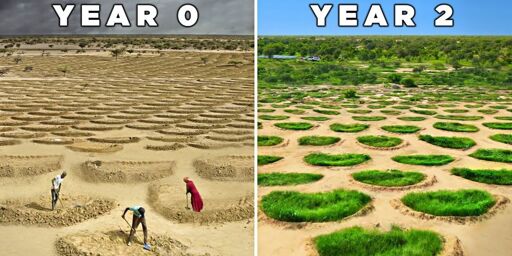Just a few years ago, the Sahel region at the northern edge of Senegal was a “barren wasteland” where nothing had grown for 40 years. But the United Nations World Food Programme (WFP) and local villagers teamed up to regreen the area, bringing back agriculture, improving the economy of the people who live there, and preventing the climate migration that desertification ultimately leads to.



Why can’t the locals be trained to operate and maintain the tractor?
Probably also because there’s more than one community they need to support and there’s only one person who would receive additional income, instead of most in the community. And by teaching all to do it manually and showing the impact. (Which is making more land suitable for sustenance farming)
And getting local support is always vital to create long lasting success. Using a tractor would probably not guarantee this.
Then again you might get better answers if you look up some of these videos by organisations covering this. They usually have titles like “turning the dessert green again”
Availability of fuel and spare parts. Using any machinery in desert areas increases their demand for repair. Because sand is nasty.